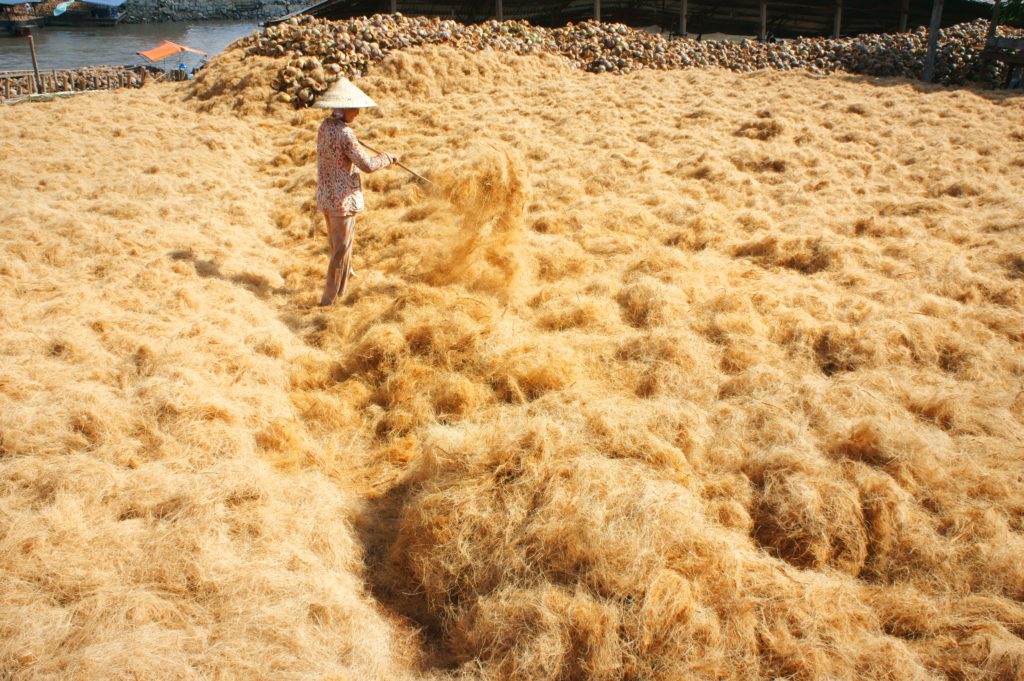
Coco coir is a renewable resource that has many benefits for gardening as well as for the environment. Although it comes in garden accessory forms such as plant pots and hanging basket liners, it can also help produce a more abundant garden when used as a soil amendment or, in cases such as hydroponic gardening, as a soil replacement. Coco coir growing benefits clay, sandy, or loamy soil — a mixture of clay, silt, and sand.
Coco Coir as Soil Amendment
One of the advantages of using coco coir is to keep plants watered without risk of root rot. Coco coir grow contains nitrogen, phosphorus, and potassium, which help seedlings grow. Cultivating a garden in soil amended with coco coir grow might still require the addition of other nutrients, such as slow-release fertilizer.
Lightweight coco coir grow bricks are easy to transport and use. The compacted coir fibers need to first be hydrated by placing the coir brick into a large container and adding water. The hydrated coco coir brick will expand to approximately 10 times its dehydrated volume. If the coco coir grow medium is already in loose form, use low-salt coir or, if the coir is not low-salt, soak it in a bucket of water before mixing it with soil.
To create a homemade potting mix that some plants grow best in, use one-third compost, one-third perlite, and one-third coco coir grow medium. Porosity is an important aspect of plant success — coco coir grow medium helps keep the soil moist. Sprinkle in a handful of volcanic rock dust to add nutrients that might help increase fruit sweetness and flower production. Finally, add an organic fertilizer, such as seaweed, to the mix.
If amending a flower bed directly, use a garden tool such as a hoe to mix coco coir grow medium into the top layer of the entire bed of soil.
Coco Coir Growing Without Soil
Coco coir grow is a common choice for gardening without soil, otherwise known as hydroponic gardening, which can increase crop yields because you can grow many plants close together. Soil hydration varies depending on the type of soil, but coco coir grow holds 40 percent of its weight in water to keep plants hydrated, an important feature of hydroponic gardens that require less water. Plant roots develop profusely in coco coir without soil, but the leaves and plant parts above the soil might require additional material, such as a fertilizer, to thrive.
Coco coir’s natural qualities are better for the environment than products such as weed killers and tarps made from manmade materials, which are at risk of leeching poisons into the soil. Coco coir is also safer than products such as rockwool, the small fibers of which can be inhaled by those who use it if not wearing proper protection during application. Using coco coir grow medium also feeds the soil and keeps it hydrated while allowing proper ventilation.
Overall, using coco coir grow medium might stimulate a higher-yielding crop.

Leave a Reply
You must be logged in to post a comment.